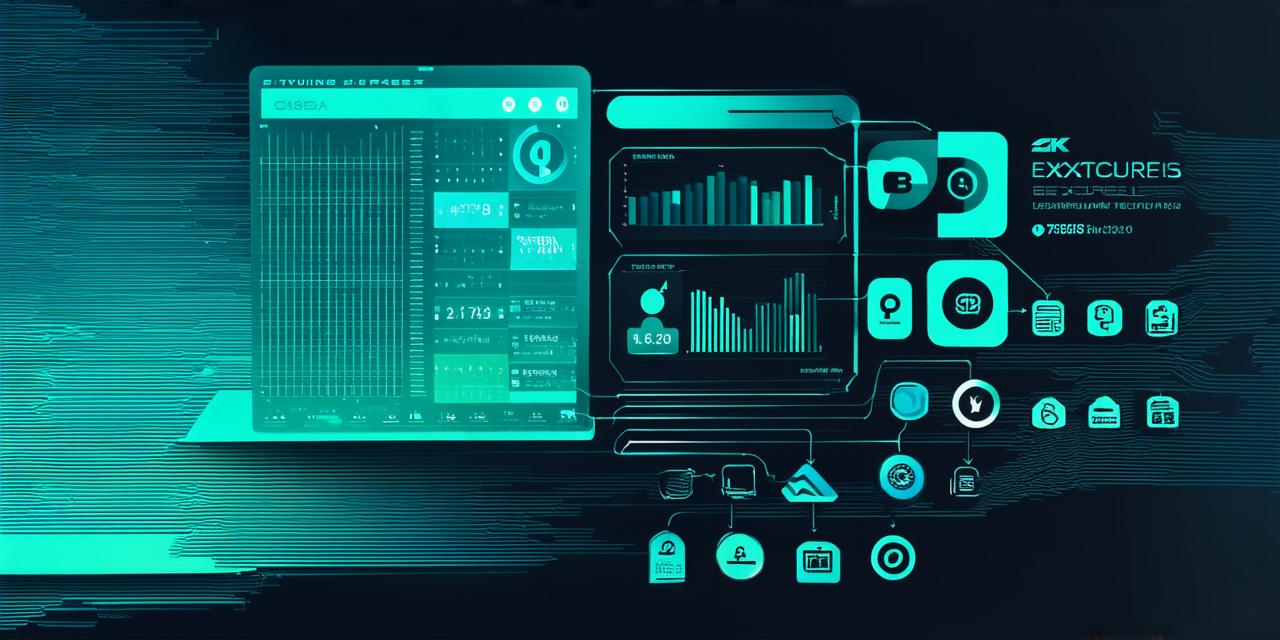Blockchain technology is revolutionizing the world as we know it. It’s decentralized, secure, and transparent, making it ideal for a wide range of applications. In this guide, we’ll explore what blockchain is used for, its benefits, and real-life examples to illustrate its potential.
What is Blockchain?
Blockchain is a distributed ledger technology that allows data to be stored and transferred securely without the need for intermediaries. It’s made up of blocks, which contain a record of all transactions on the network. Each block is linked to the previous one using cryptography, creating an unalterable chain of information.
Blockchain Use Cases
1. Cryptocurrencies
The most well-known use case for blockchain technology is cryptocurrencies like Bitcoin and Ethereum. These digital currencies allow users to make transactions securely and anonymously, without the need for intermediaries like banks. They’re decentralized and transparent, making it easy to track transactions and prevent fraud.
2. Smart Contracts
Smart contracts are self-executing contracts that automatically trigger actions when certain conditions are met. They’re stored on a blockchain, making them secure and transparent. Smart contracts can be used for a wide range of applications, including supply chain management, voting systems, and insurance claims.
3. Decentralized Applications (dApps)
dApps are applications that run on a blockchain network without the need for intermediaries like app stores or central authorities. They’re decentralized, transparent, and secure, making them ideal for applications like social media, messaging, and gaming.
4. Supply Chain Management
Blockchain technology can be used to track the movement of goods from production to delivery. It’s transparent and immutable, making it easy to prevent fraud and ensure that products are authentic. Blockchain can also help reduce waste and improve efficiency in supply chain management.

5. Voting Systems
Blockchain technology can be used to create secure and transparent voting systems. It’s decentralized and tamper-proof, making it impossible for hackers or corrupt officials to manipulate the results. Blockchain can also help prevent voter fraud and ensure that every vote is counted accurately.
6. Identity Verification
Blockchain technology can be used to create a secure and tamper-proof identity verification system. It’s decentralized and transparent, making it impossible for hackers or corrupt officials to manipulate the data. Blockchain can also help prevent identity theft and ensure that personal information is protected.
Benefits of Blockchain Technology
1. Decentralization
Blockchain technology is decentralized, meaning that it doesn’t rely on any central authority or intermediary to function. This makes it secure and resistant to censorship and manipulation.
2. Transparency
All transactions on a blockchain network are transparent and immutable. This makes it easy to track and verify the authenticity of data, reducing the risk of fraud and corruption.
3. Security
Blockchain technology uses cryptography to secure data and prevent unauthorized access. It’s resistant to hacking and cyber attacks, making it ideal for applications that require high levels of security.
4. Efficiency
Blockchain technology can reduce the need for intermediaries and middlemen, speeding up transactions and reducing costs. It’s also scalable, meaning that it can handle large volumes of data and users without slowing down.
Real-Life Examples of Blockchain in Action
1. IBM’s Food Trust
IBM’s Food Trust is a blockchain-based system that tracks the movement of food from production to delivery. It allows food companies to trace the origin of their products, ensuring that they’re authentic and safe for consumption.
2. Walmart’s On-Time Inventory
Walmart uses blockchain technology to track inventory levels and prevent stockouts. It also allows the company to verify the authenticity of products, reducing the risk of counterfeit goods and fraud.
3. The Voting Machine Company
The Voting Machine Company is a blockchain-based voting system that provides transparency and security. It’s decentralized and tamper-proof, making it impossible for hackers or corrupt officials to manipulate the results.
4. The Identity Verification System
bekannten Anwendungen wie Kryptowährungen zu verwenden. Es kann jedoch auch für eine Vielzahl anderer Anwendungsfälle eingesetzt werden, wie zum Beispiel Lieferkettengovernance, Abstimmungssysteme, Identitätsverifizierung und mehr.
- Wie verhindert Blockchain-Technologie Betrug?
Blockchain-Technologie nutzt Kryptografie, um Daten zu sichern und unbefugten Zugriff zu verhindern. Es ist dezentralisiert und transparent, was es unmöglich macht, Daten von Hackern oder korrupten Beamten zu manipulieren. - Was ist der Unterschied zwischen einem Block und einer Kette in der Blockchain-Technologie?
Ein Block ist ein Datensatz über Transaktionen im Netzwerk, während eine Kette eine Reihe von Blöcken ist, die durch Kryptografie miteinander verknüpft sind. Jeder Block enthält einen Verweis auf den vorherigen Block, was einen unveränderbaren Zusammenhang der Informationen schafft. - Wie verbessert Blockchain-Technologie die Effizienz?
Blockchain-Technologie kann Intermediäre und Zwischenmänner reduzieren, was Transaktionen beschleunigt und Kosten senkt. Es ist auch skalierbar, was bedeutet, dass es große Mengen an Daten und Nutzern ohne Geschwindigkeitsverlust verarbeiten kann. - Wie funktioniert das Blockchain-Technologie im Alltag?
Blockchain-Technologie ist eine dezentrale, sichere und transparente Technologie, die für eine Vielzahl von Anwendungsfällen eingesetzt werden kann. Von Kryptowährungen bis hin zu Lieferkettengovernance, Abstimmungssystemen, Identitätsverifizierung und mehr – Blockchain-Technologie hat das Potenzial, Branchen und Prozesse zu verbessern. Als Entwickler ist es wichtig, sich auf dem Laufenden mit den neuesten Entwicklungen in der Blockchain-Technologie zu halten und ihre Potentialanwendungen zu erkunden.
